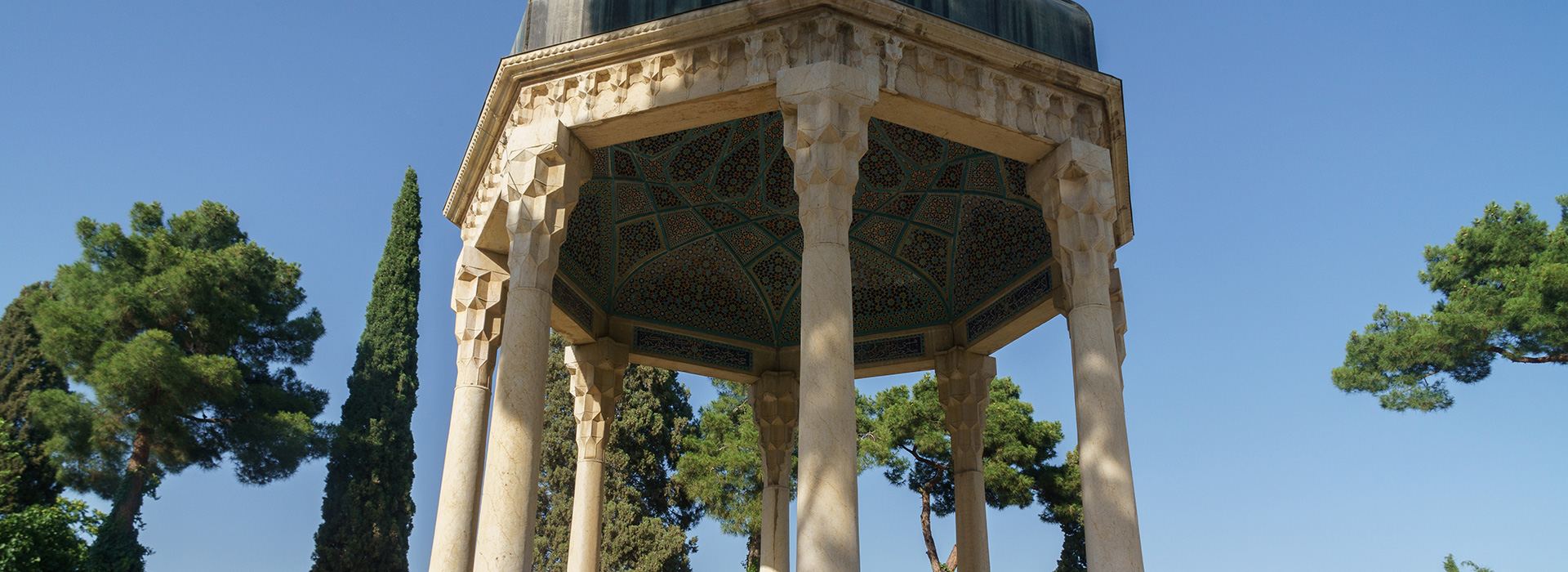There is not much credible information about Hafez’s life, but with a fair amount of certainty we can provide you with some reliable information about his life in this article.
Hafez was born in Shiraz in south central part of Iran. His exact birthdate is not known but the most probable date is between 1320 and 1325 A.D. His real name was Shamseddin Mohammad but his pen-name was Hafez or Hafiz. This title is given to those who have learnt the Quran by heart and Hafez was believed to have done so. His father was Buha-Ud-Din and he had two older brothers. He got married in his twenties and had one child. He memorized the Quran when he was a teenager and at that time, he also memorized many of the works of <a href=”https://iranhrc.com/saadi”>Saadi</a> as well as Attar, Nizaami and Rumi. Hafez worked at a bakery for some time and it was during this time that he met his beloved Shakh-e Nabat, A young woman with an incredible beauty. Lots of Hafez’s poems are addressed to Shakh-e Nabat. In order to reach his love, he spent forty days and nights alone at the tomb of Baba Kuhi. After that, he met Attar and became his disciple. Between his twenties and thirties, he became a poet of the court of Abu-Ishak. He gained a lot of fame in Shiraz at that time and became very popular; the phase of “spiritual Romanticism” in his poetry. In his middle age, Hafez fell out of favor with Shah Jahan and He had to leave Shiraz quickly because of his safety and headed to Isfahan. At this time, most of his poems was focused on his longing for Shiraz, for Shakh-e Nabbat and his spiritual master Attar (not the renowned Attar of Neishabour who had lived a couple of centuries before Hafez, but the less-known Attar from Shiraz). In about 4 years, he was invited to Shiraz by Shah Shuja and then his exile was officially ended. After returning to Shiraz, he was reinstated in his post at the college. Hafez wrote more than half of his Ghazals in his sixties till the age 69 that he unfortunately passed away. The prominent everlasting Divan-e Hafez includes 500 Ghazals, 42 Robayiees and a few Ghaseedehs written in a 50-year period. Hafez would write his poems just when he was divinely inspired and thus he has composed the average of 10 Ghazals each day. These days many Iranian and foreign poets who are interested in literature and poetry read and study Hafez’s poems and some believe that he is the most incredible poet of all time.
As it was mentioned in the article, Hafez passed away at the age of 69 in his birthplace, Shiraz. His tomb is in Musalla Gardens in Shiraz. It is known as Hafezieh and attracts thousands of domestic and international tourists each year. In better words, it’s impossible that a person travels to Shiraz and not visit Hafezieh. Iranhrc can easily manage your trip to Iran to see the tomb of this prominent poet.

